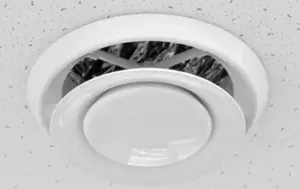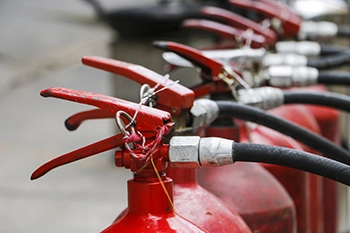Fire safety isn’t just a concern for landlords and business owners. Every home, whether rented or privately owned, needs the right fire safety equipment to protect people and property. A few simple pieces of equipment can make all the difference when reacting to a small incident before it becomes something far more serious.
Domestic fires remain one of the most common emergencies across the UK. Many start from everyday situations, cooking, electrical faults, or unattended candles. While prevention is the first line of defence, having the correct equipment in place gives you and your family valuable time to respond safely.
A professional Fire Risk Assessment can help identify specific hazards in your home and ensure you meet essential safety standards. Even for single dwellings, a few simple steps and the right tools can drastically reduce the risk of injury or property damage.
Every property should have a few core items designed to detect, control, or slow down a fire. These simple additions create safer living environments and make a vital difference in emergencies. Having the right equipment in place also provides peace of mind, knowing that you’re prepared if something unexpected happens.
Each home is different, but most require the same essential tools, from smoke alarms and extinguishers to fire blankets and clear escape routes. Together, these features form the foundation of domestic fire safety, helping to protect both people and property in the moments that matter most.

Smoke alarms are the most important piece of fire safety equipment in the home. They provide an early warning, giving occupants time to escape or tackle a small fire if safe to do so. Install alarms on every floor and in key areas such as hallways, bedrooms, and living spaces.
Heat alarms are ideal for kitchens or garages, where smoke alarms may trigger falsely. Both types should be tested weekly and replaced every ten years to remain reliable.
A compact extinguisher can be invaluable in the early moments of a fire. Water and foam extinguishers are effective against common combustible materials such as paper, wood, and fabric. A CO₂ extinguisher is recommended near electrical equipment, while wet chemical extinguishers are best suited for kitchens.
Only use an extinguisher if it’s safe to do so and you have a clear exit behind you. For advice on suitable options and professional installation, visit our Fire Extinguisher Supply and Installation page.
Fire blankets are simple but effective. They’re designed for small pan fires or clothing fires, particularly in kitchens. Keep one mounted on a wall near cooking areas but away from direct heat. After use, it must be replaced immediately.
Fire blankets are easy to deploy and require little maintenance, making them a practical choice for homes of any size.
In larger homes or shared properties, emergency lighting can guide occupants safely out of the building during a power failure. For smaller homes, having battery-powered torches in accessible places, such as hallways or near exits, can help during a nighttime evacuation.
Fire doors slow the spread of flames and smoke, creating vital time for people to escape. Always keep them closed and check that the hinges, seals, and self-closing mechanisms work properly.
Equally important is maintaining clear escape routes. Avoid storing items in hallways or stairwells that could block an exit or create extra fuel for a fire.

Buying fire safety equipment is only the first step. Regular maintenance keeps everything in working condition and ensures you meet safety expectations.
Check smoke alarms weekly, replace batteries annually if needed, and service extinguishers once a year. Wipe equipment clean and store it somewhere accessible to everyone in the household. Our Fire Extinguisher Servicing and Maintenance service provides professional inspections that keep your home or property compliant and ready in case of an emergency.
If your home is part of a multi-occupancy property, these checks are even more important. A single faulty extinguisher or alarm could affect multiple tenants, so regular servicing ensures consistent safety across every level.
While most domestic safety measures can be managed at home, a professional inspection gives you peace of mind that every piece of equipment is correctly installed and fully operational. HMO Fire Risk Assessment works with homeowners, landlords, and managing agents to improve safety standards and reduce risk in all types of properties.
Our assessors provide independent advice tailored to your layout, occupancy, and risk profile. Whether you need new equipment, a risk review, or ongoing compliance support, we’re here to help.
To arrange an assessment or discuss your fire safety requirements, get in touch through our Contact Us page.
Fire safety in the home starts with awareness and preparation. Installing the right fire safety equipment and keeping it in good condition protects more than just property; it protects lives. A few small actions today can prevent a far greater loss tomorrow.

Understanding Fire Safety at Home Fire safety isn’t just a concern for landlords and business owners. Every home, whether rented or privately owned, needs the...

Introduction Emergency lighting is often overlooked, yet it plays a crucial role in fire safety compliance. When normal power fails, lighting helps people find escape...